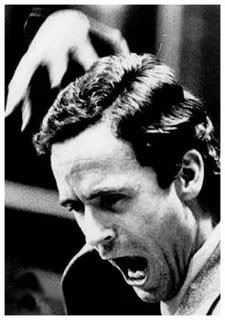Dresden wrote:disoblige wrote:dice wrote:they also alerted the WHO of the virus on dec. 31 (three weeks before the first case was announced in s. korea), sequenced the genome and made the data available to the international community
also china publish "no human to human transmission"
That video was obviously shot at the very beginning of the outbreak. And yes, they did say some things that were not true at the time. Just as our own president announced that "in a few weeks, there will be zero cases here", and "we have this under control".
Not in the beginning, this was 1 month later. They still continue with their false information and propaganda.
----
December 6: According to a study in The Lancet, the symptom onset date of the first patient identified was “Dec 1, 2019 . . . 5 days after illness onset, his wife, a 53-year-old woman who had no known history of exposure to the market, also presented with pneumonia and was hospitalized in the isolation ward.” In other words, as early as the second week of December, Wuhan doctors were finding cases that indicated the virus was spreading from one human to another.
December 21: Wuhan doctors begin to notice a “cluster of pneumonia cases with an unknown cause.”
December 25: Chinese medical staff in two hospitals in Wuhan are suspected of contracting viral pneumonia and are quarantined. This is additional strong evidence of human-to-human transmission.
Sometime in “Late December”: Wuhan hospitals notice “an exponential increase” in the number of cases that cannot be linked back to the Huanan Seafood Wholesale Market, according to the New England Journal of Medicine.
December 30: Dr. Li Wenliang sent a message to a group of other doctors warning them about a possible outbreak of an illness that resembled severe acute respiratory syndrome (SARS), urging them to take protective measures against infection.
January 3: The Chinese government continued efforts to suppress all information about the virus: “China’s National Health Commission, the nation’s top health authority, ordered institutions not to publish any information related to the unknown disease, and ordered labs to transfer any samples they had to designated testing institutions, or to destroy them.”
Roughly one month after the first cases in Wuhan, the United States government is notified. Robert Redfield, the director of the Centers for Disease Control and Prevention, gets initial reports about a new coronavirus from Chinese colleagues, according to Health and Human Services secretary Alex Azar. Azar, who helped manage the response at HHS to earlier SARS and anthrax outbreaks, told his chief of staff to make sure the National Security Council was informed.
Also on this day, the Wuhan Municipal Health Commission released another statement, repeating, “As of now, preliminary investigations have shown no clear evidence of human-to-human transmission and no medical staff infections.”
January 4: While Chinese authorities continued to insist that the virus could not spread from one person to another, doctors outside that country weren’t so convinced. The head of the University of Hong Kong’s Centre for Infection, Ho Pak-leung, warned that “the city should implement the strictest possible monitoring system for a mystery new viral pneumonia that has infected dozens of people on the mainland, as it is highly possible that the illness is spreading from human to human.”
January 5: The Wuhan Municipal Health Commission put out a statement with updated numbers of cases but repeated, “preliminary investigations have shown no clear evidence of human-to-human transmission and no medical staff infections.”
January 6: The New York Times publishes its first report about the virus, declaring that “59 people in the central city of Wuhan have been sickened by a pneumonia-like illness.” That first report included these comments:
Wang Linfa, an expert on emerging infectious diseases at the Duke-NUS Medical School in Singapore, said he was frustrated that scientists in China were not allowed to speak to him about the outbreak. Dr. Wang said, however, that he thought the virus was likely not spreading from humans to humans because health workers had not contracted the disease. “We should not go into panic mode,” he said.

















 ...more polite to let your feet juicing up in the shoes too
...more polite to let your feet juicing up in the shoes too 

